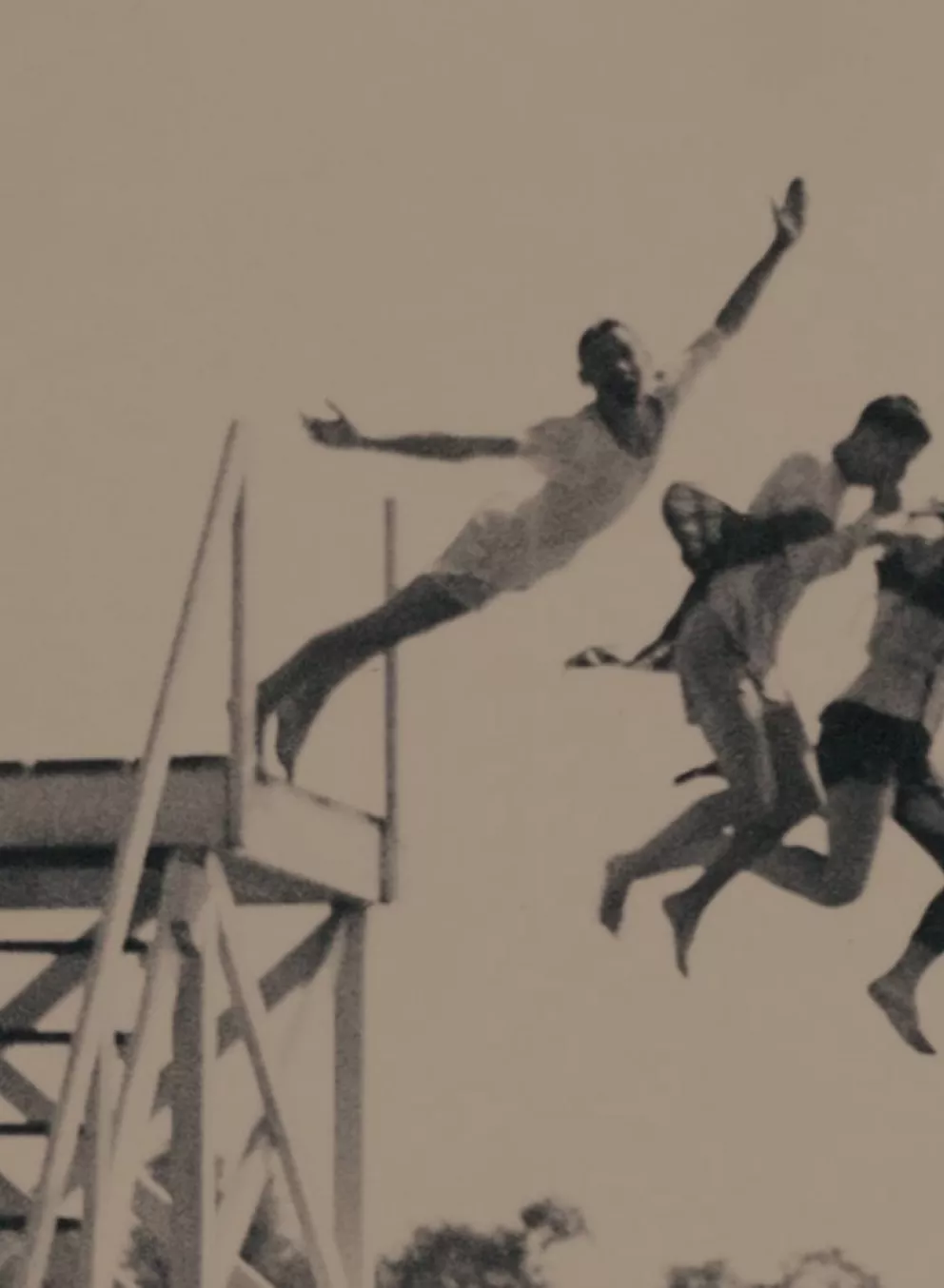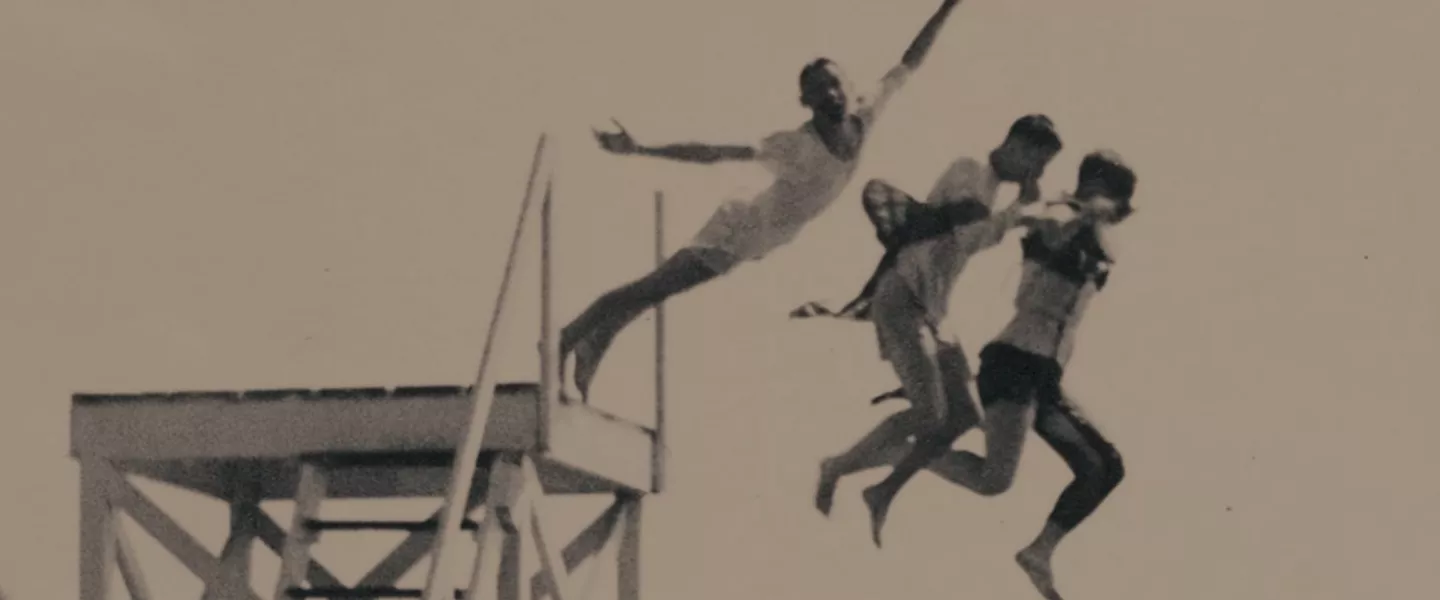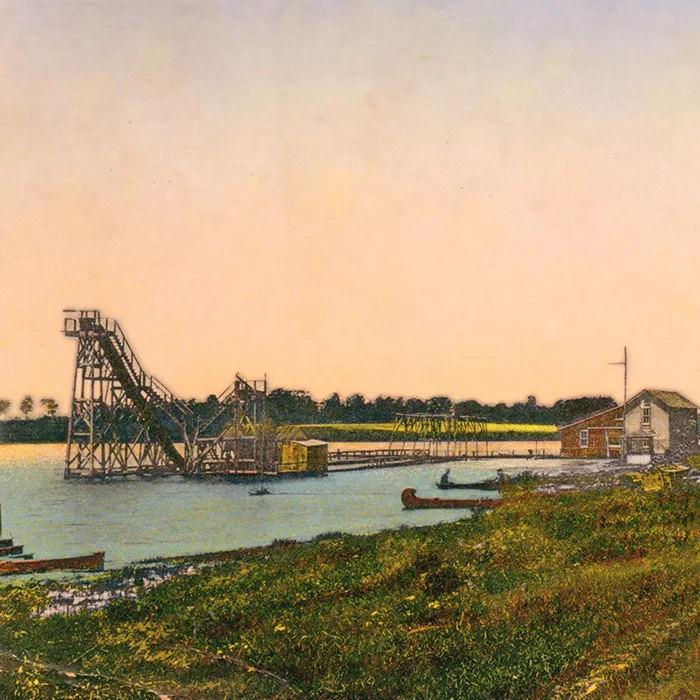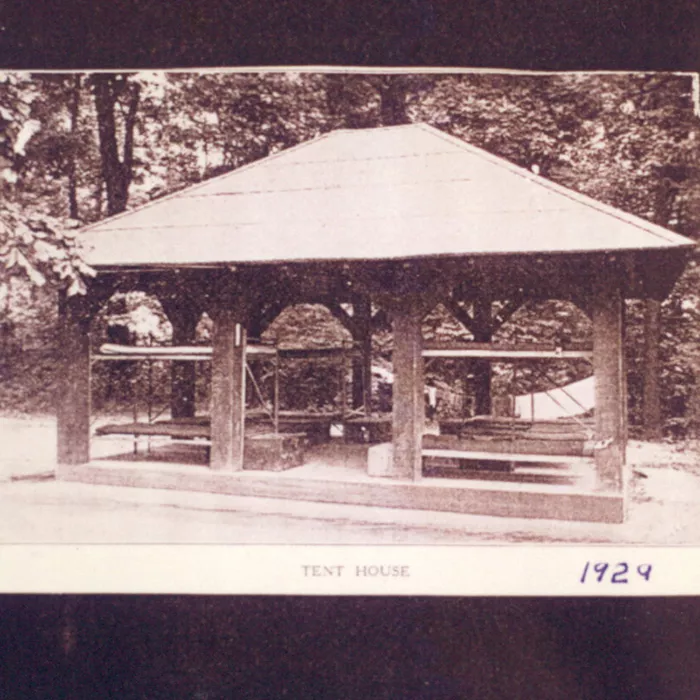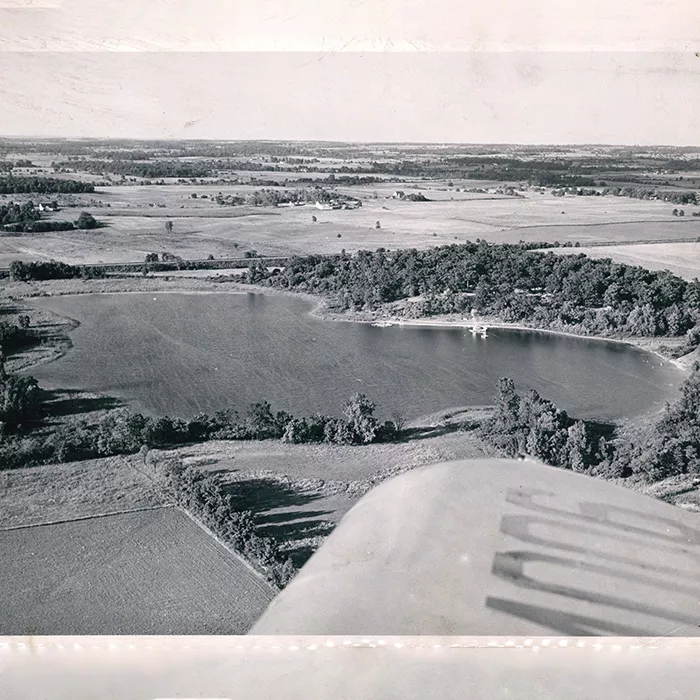1910-1913: The YMCA Arrives At Camp
The Metropolitan YMCA of Columbus’s camping programs began in 1910 with 128 boys at Camp Budd, 14 miles from Columbus. In 1913, Harry Spyker brought 35 boys to our current camp for ten days, naming it Camp Bailey in honor of Mahlon Baily, the boys' director.

1918: First YMCA Program
The Metropolitan YMCA of Columbus’s camping programs began in 1910 with 128 boys at Camp Budd, 14 miles from Columbus. In 1913, Harry Spyker brought 35 boys to our current camp for ten days, naming it Camp Bailey in honor of Mahlon Baily, the boys' director.
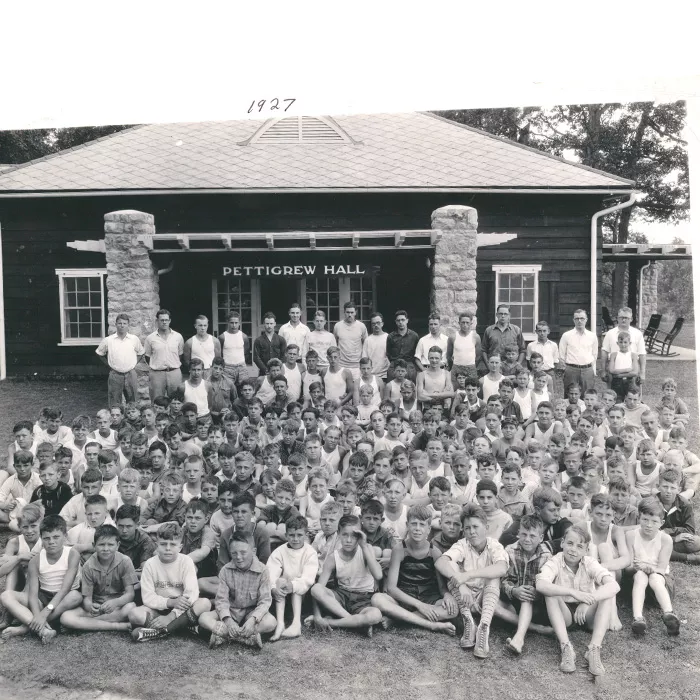
1927: Pettigrew Hall
Camp Willson dedicated Pettigrew Hall on June 30, 1927 in honor of Edward S. Pettigrew, a YMCA board member and Vice President of the Godman Company.
Mr. Pettigrew had high standards. After his criticisms of the camp’s athletic facilities, fellow camp enthusiasts challenged him to pay a $2,000 fine or publicly apologize. He took the request seriously and donated $40,000 to construct a recreation building and improve the camp’s athletic fields.
1928: Construction Progress
Our back three summer cabins (10-12) were built in 1928, bringing camp capacity to 144. “Old Man Askren,” a development company owned by a Bellefontaine resident, completed the cabins and Pettigrew construction and remodeled the dining hall, built in 1896.
1929-1937: Caretaker Lodging
Guy Rostofer began working as a camp farmer at Camp Willson in 1929. Camp caretakers Guy and Dot Rostofer lived in a double log cabin for the first eight years of their stay on the property. A new caretaker’s house was built for $5,800 by the Costin Brothers of Bellefontaine in 1937. The Rostofers lived in this house until Guy’s retirement in 1986.
1950: New Buildings, Repairs and Communication
The camp hired an Amish group from Plain City, led by Attlee Mullett, to construct the Arts & Crafts Building and Health Center and repair Pettigrew Hall and the dining hall.
Bob Slemmer built the camp’s communication system using a telephone, and P.A. Brad Kunze maintained it until Inter-Tel Technologies of Columbus donated a used telephone system in 1997.
1963: Ranch Camp Expansion
Camp Willson added 80 acres by purchasing the Fawcett Farm, which became Ranch Camp. In 1970, it was dedicated to Guy Rostofer, camp caretaker from 1929-1986
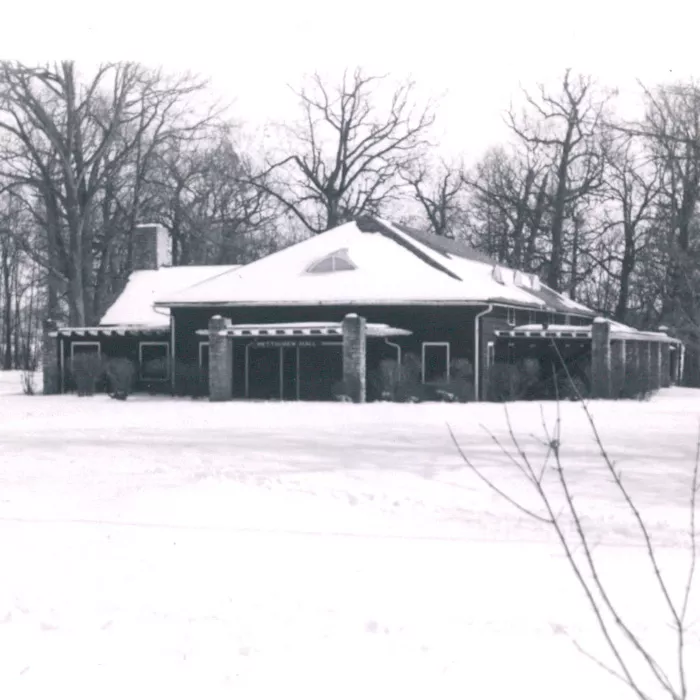
1968: Winterization & New Buildings
The YMCA purchased 201 acres from the Ward Family on the west side of the lake. This land has since become the majority of camp farmland. The addition featured a 150-year-old log cabin next to the still-existing wind pump.
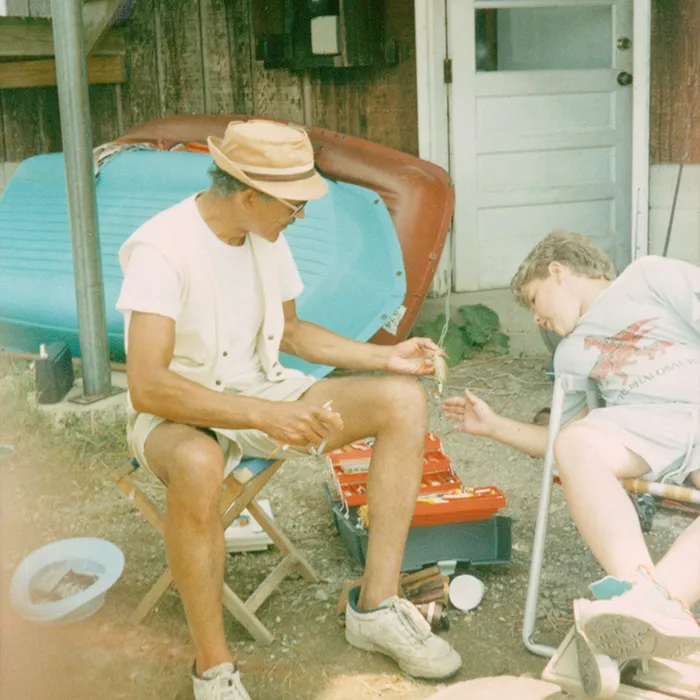
1975: New Waterfront Building & More Winterization
The YMCA’s men campers volunteered much of their time and materials to construct the Waterfront building, “the Davis Building,” for Ron Davis. Thanks to Mr. Davis, the Arts & Crafts building was winterized in 1975.
1980-1981: Historical Cabin
Program Director Thom Peters located a 150-year-old log cabin, which Bellefontaine Mayor Bob Tynan donated in 1980. The cabin was moved to camp and restored by Guy Rostofer and CETA Workers in 1981.
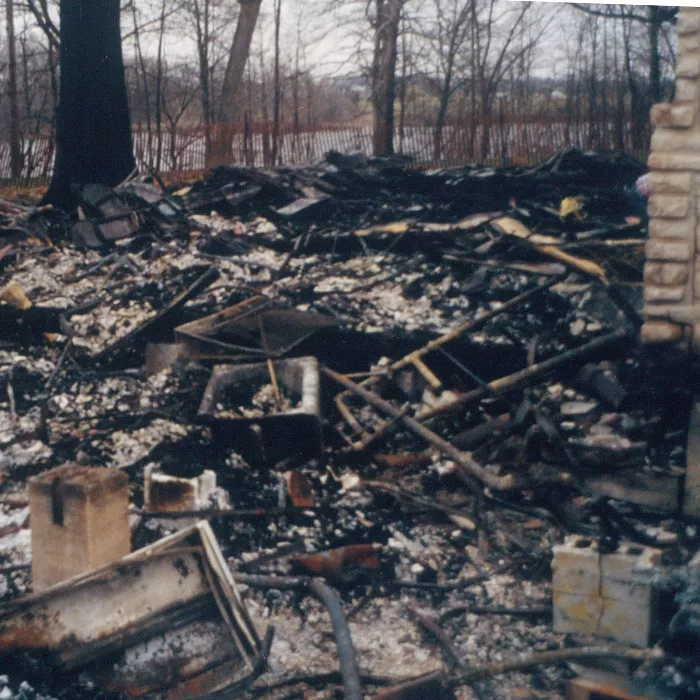
1982: Dining Hall Fire
A fire destroyed the dining hall on April 9, 1982. We discovered the fire at 1:30 a.m., and fire departments from Bellefontaine and Degraff could do nothing but protect other buildings from the inferno.
Camp Willson converted Pettigrew Hall into a dining facility in December 1982.
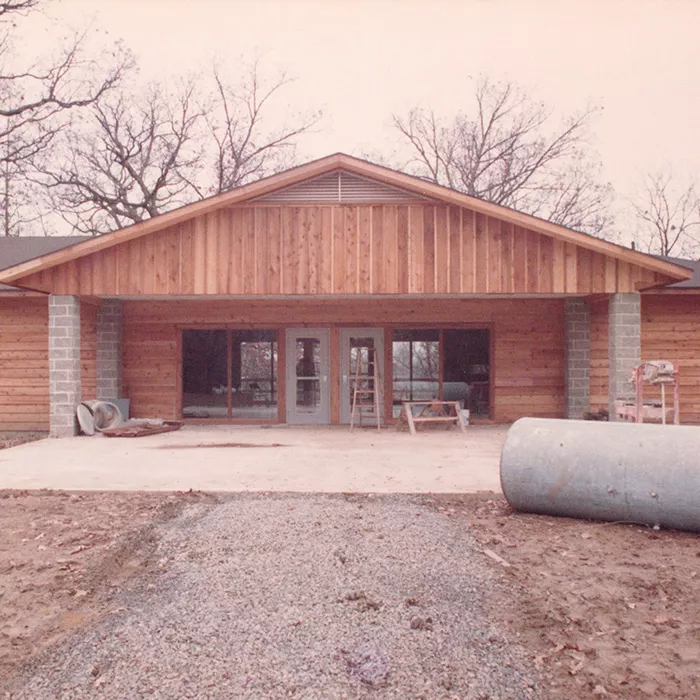
1983: New Winterized Cabins & Conference Center
Thanks to a campaign led by Ohio State University Basketball Coach Eldon Miller and Board Member Ted Magnuson, the camp completed three winterized cabins in March 1983.
The camp also opened the ClarArt Conference Center in December 1983.
1993-1998: New Winterized cabins
Two additional winterized cabins were added in 1993 and 1998, bringing our winterized capacity to 200.
1998: Hay Field Expansion
An additional 46 acres, located on the south side of County Road 11 across from the camp entrance road, was purchased from Tom Ewing. Camp Willson uses this land for horse hay production.
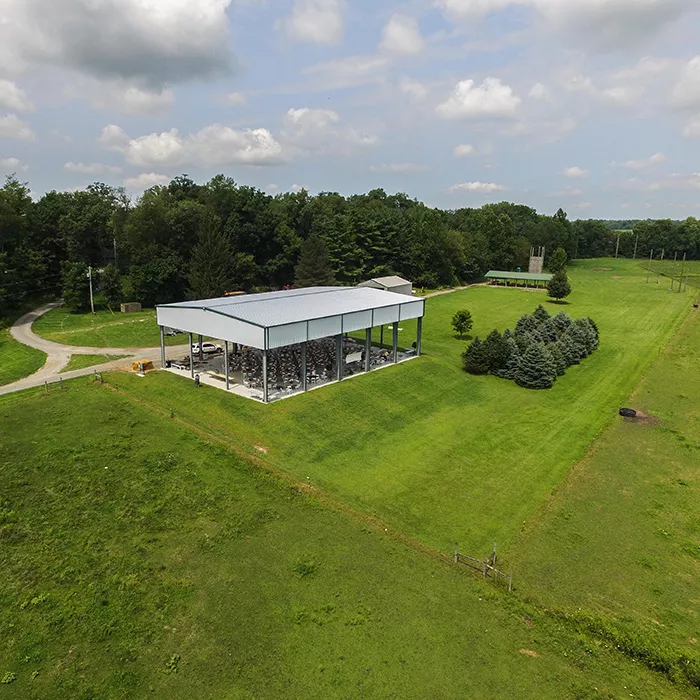
2010-2018: New Camp Facilities
We constructed our new barn at the ranch in 2010, a waterfront amphitheater by the lake in 2016 and Airnasium near the ranch in 2018.
YMCA Camp Willson Directors
- Harry Spyker: 1913-1934
- Hank Baldwin: 1934-1938
- Casey Klippel: 1938-1959
- Bob Schmidt: 1959-1961
- Al Deiss: 1961-1969
- Gale Galbreath: 1969
- Bob Hildreth: 1969
- Mike Daum: 1970
- Frank Wilcox: 1971-1978
- Bruce Boyer: 1979-1984
- Tim Milbern: 1984-1986
- Rob Habicht: 1986-1988
- Anne Brienza: 1989-2015
- Jim Sexstone: 2015-2019
- Heather Graham: 2019-2024
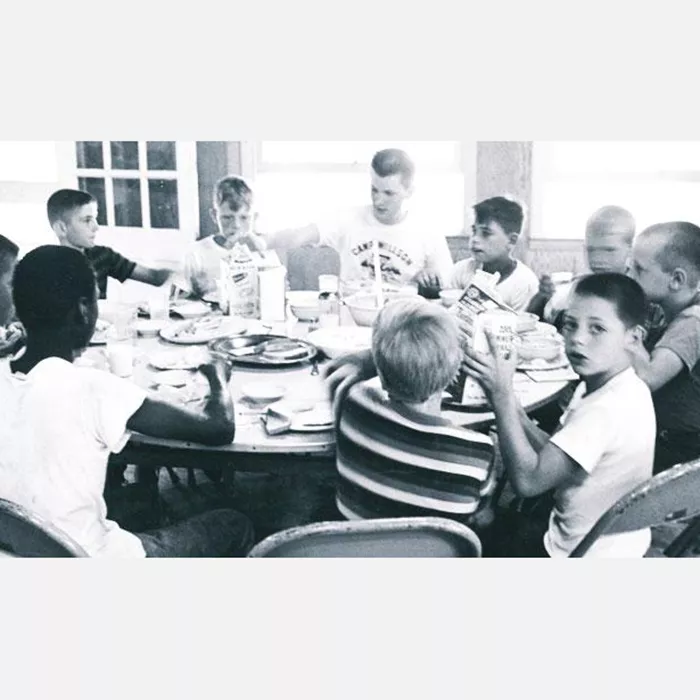
YMCA Camp Willson Families
Clayton Rhea first worked in the camp kitchen in 1938, following his employment at the Bellefontaine Railroad YMCA. Later, his sons Tracy, Gary and Phil and his granddaughters Pam, Alicia and Michelle became staff members. Tracy’s grandchildren also became campers.
Several other two-generation families have been staff members, including Bob and Robbie Herbst; Ann, Frank, Dean, Beth and Cathy Wilcox; Ralph, John and Sue Ramey; Guy and Chuck Rostofer. Clifford Hadley began taking pictures at camp in 1921 and passed that tradition on to his sons Vance and Jack. Jack’s son, Mike, was a staff member at camp for several years.
Sources
The History of Men’s Camp; the research of Bruce Boyer, Thom Peters and Frank Wilcox, and vivid memories of Guy Rostofer, Bob Hildreth, Tracy Rhea and Jim Roehm. Revised in 1998 by Anne Brienza.
